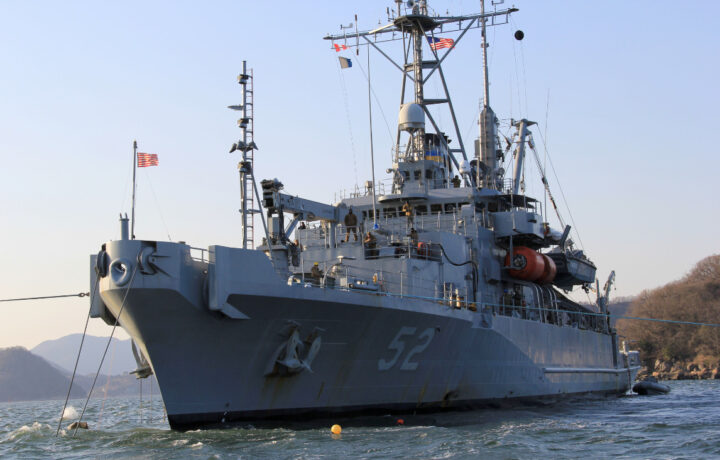This month, the United States Navy salvage tug USNS Salvor arrived in the Kattupalli shipyard in the port of Tamil Nadu, India. It wasn’t just another port-of-call visit for the auxiliary rescue ship – and instead, it is now undergoing repairs at the facility. USNS Salvor is also the third vessel to receive maintenance work on the subcontinent.
Last August, the U.S. Navy’s USNS Charles Drew, a Lewis and Clark-class dry cargo ship, headed to the shipyard for repair work after the U.S. allotted a contract to Larsen & Toubro. Earlier this year, the facility also conducted maintenance on the USNS Matthew Perry, another dry cargo ship of the same class.
Under the terms of the deal, the Kattupalli Shipyard near Chennai has undertaken voyage repairs of the U.S. Navy’s Military Sealift Command vessels. The facility is equipped with heavy ship-lift, multiple dry berths, and a wet berth. It is able to concurrently build new ships while undertaking the repairs and refits of existing vessels.
The Indian conglomerate signed a follow-up agreement with the U.S. Navy this week, which marks another step in the growing relationship between the two key partner nations.
“This MSRA is yet another milestone in our ever-expanding U.S.-India partnership,” said the US Consul General in Chennai Judith Ravin.
“This historic agreement is a direct outcome of the 2022 U.S.-India 2+2 Ministerial Dialogue and demonstrates U.S. commitment to utilize repair facilities on a regular basis at the L&T shipyard in Kattupalli,” Ravin added. “This agreement will serve to strengthen our two nations’ strategic partnership and contribute to a free and open Indo-Pacific.”
The deal with L&T is valid for five years.
USNS Salvor was built in 1986 and is the last of the Cold War-era Safeguard-class. She is equipped for beach stranding response, emergency hull repair, subsea lifting, dive operations, and ROV (remotely operative vehicle) deployment.
Outsourcing Naval Maintenance
The United States Navy has continued to struggle with domestic ship repair capacity, while a new briefing slide that has been circulating online this week – and which has been confirmed as authentic by U.S. Navy officials – offered a grim disparity between Chinese and U.S. capacity to build new naval vessels.
According to data compiled by the Office of Naval Intelligence, Chinese shipbuilders have more than 200 times the capacity to produce surface warships and submarines. That has underscored longstanding concerns about the U.S. Navy’s abilities to confront Beijing in a conflict – including how the service could sustain its current fleet.
The answer could lie in working with foreign shipyards to handle some of the maintenance. The Biden administration has already been considering a naval ship repair agreement with commercial yards in Japan, a close ally with a sophisticated shipbuilding industry.
As previously reported, U.S. Ambassador to Japan Rahm Emanuel is leading the efforts, and he had already spoken to members of Congress, while embassy staff has been mobilized to reach out to Japanese officials.
Though this would be a considerable shift for the U.S. Navy, it could signal a new level of integration with U.S. allies and partners. The idea could further expand to South Korea, Singapore, and the Philippines. These are key strategic partners in the region, and it would be in their respective interests as they are seeking to contain Chinese expansion in the South China Sea and beyond.
India is also seeking to expand its navy, and last summer launched its first domestically-built aircraft carrier. While it still trails China in terms of fleet size, Indian shipbuilding has been seen as a missed opportunity for a nation that seeks to be increasingly self-reliant. As part of the new Make in India initiative, the shipbuilding industry could see a resurgence – and New Delhi has been quick to tout the fact that shipbuilding had flourished under the Chola Kingdom in the ancient era until it declined at the end of the 19th century.




